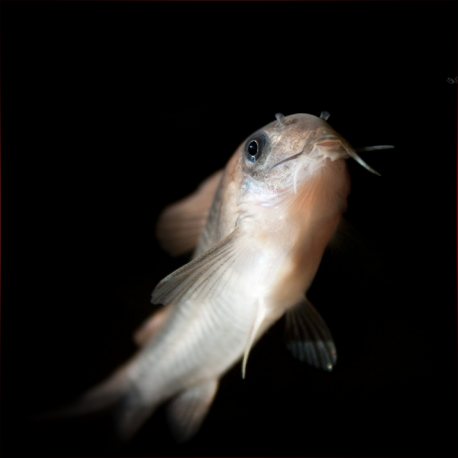More info
Datasheet
| Minimum Tank Size | 80 litres / 21.13 US gallons |
| Maximum Size | 6.5cm / 2.56inches |
| Temperature | 20°C / 68.00°F - 27°C / 80.60°F |
| Hardness | 1.01dgH / 18ppm - 12.05dgH / 215ppm |
| pH | 5.5-7.2 |
General Description
The Rusty Cory (Corydoras rabauti) is also known as 'Rabaut's cory,' 'rust cory,' and 'iridescent cory' in the aquarium trade. They are included in the family Callichthyidae, characterized by bony plates instead of scales on their bodies. Taxonomically confusing, they are often assigned a 'C' or 'CW' number. These fish are facultative air breathers, possessing a modified intestine for atmospheric oxygen uptake. The species has stiff pectoral-fin spines that can cause a painful sting, possibly due to toxic gland secretions.
Aquarium Setup
For Rusty Cory maintenance, it is recommended to keep them in a group of at least 4-6 individuals. A tank size of a minimum of 80 liters is advised with fine sand substrate or clean rounded gravel. Providing some décor for cover is beneficial, offering the fish security. Water parameters should range from a pH of 5.5-7.2, hardness of 18-215ppm, and a temperature of 20-27°C.
Behaviour
Rusty Cories are known to be peaceful and gregarious fish, thriving in group settings. They exhibit a schooling behavior and should ideally be kept with a minimum number of companions to ensure their well-being in the aquarium environment.
Feeding and Diet
Corydoras rabauti are foraging omnivores that accept sinking dried foods along with live and frozen varieties such as bloodworms and Tubifex. A varied diet is crucial for their optimal health, as they should not solely rely on leftovers in the tank. Maintaining a balanced and diverse diet ensures the Rusty Cories thrive in captivity.
Reproduction & Dimorphism
Breeding these Cories involves a ratio of males to females and specific water conditions to encourage spawning. Eggs are typically deposited on various surfaces, requiring careful handling and maintenance until the fry are independent. Female Rusty Cories tend to grow larger and have a broader, deeper body compared to males.
Habitat and Distribution
While specific habitat information is limited, Rusty Cories inhabit floodplain lakes, oxbows, and riverine habitats. Found primarily in the Rio Javarí, an Amazonian tributary along the Brazil-Peru border, their distribution extends to Colombia. The species is named after Auguste Rabaut, a renowned adventurer and collector of flora and fauna.

